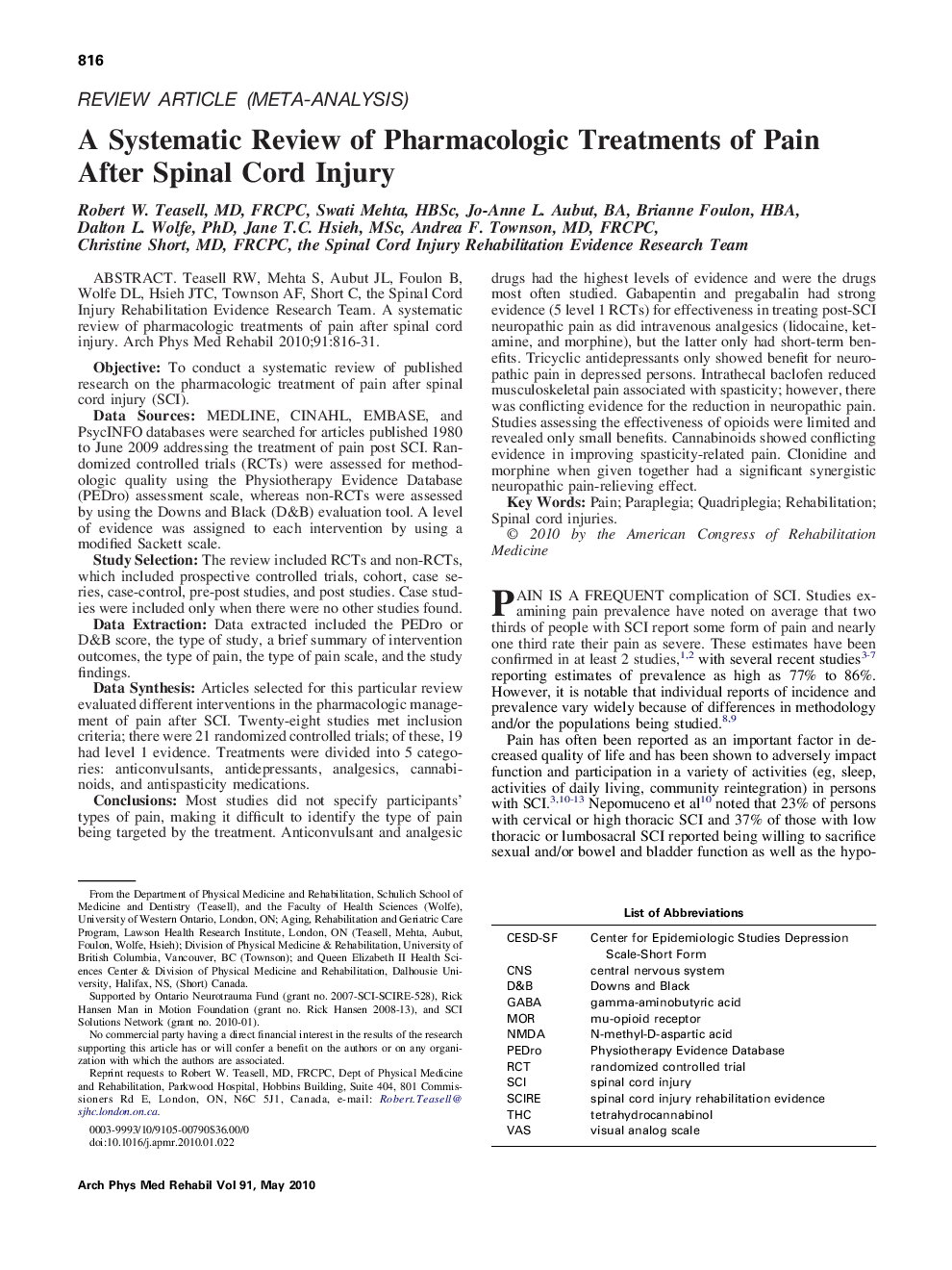| کد مقاله | کد نشریه | سال انتشار | مقاله انگلیسی | نسخه تمام متن |
|---|---|---|---|---|
| 3451263 | 1595753 | 2010 | 16 صفحه PDF | دانلود رایگان |

Teasell RW, Mehta S, Aubut JL, Foulon B, Wolfe DL, Hsieh JTC, Townson AF, Short C, the Spinal Cord Injury Rehabilitation Evidence Research Team. A systematic review of pharmacologic treatments of pain after spinal cord injury.ObjectiveTo conduct a systematic review of published research on the pharmacologic treatment of pain after spinal cord injury (SCI).Data SourcesMEDLINE, CINAHL, EMBASE, and PsycINFO databases were searched for articles published 1980 to June 2009 addressing the treatment of pain post SCI. Randomized controlled trials (RCTs) were assessed for methodologic quality using the Physiotherapy Evidence Database (PEDro) assessment scale, whereas non-RCTs were assessed by using the Downs and Black (D&B) evaluation tool. A level of evidence was assigned to each intervention by using a modified Sackett scale.Study SelectionThe review included RCTs and non-RCTs, which included prospective controlled trials, cohort, case series, case-control, pre-post studies, and post studies. Case studies were included only when there were no other studies found.Data ExtractionData extracted included the PEDro or D&B score, the type of study, a brief summary of intervention outcomes, the type of pain, the type of pain scale, and the study findings.Data SynthesisArticles selected for this particular review evaluated different interventions in the pharmacologic management of pain after SCI. Twenty-eight studies met inclusion criteria; there were 21 randomized controlled trials; of these, 19 had level 1 evidence. Treatments were divided into 5 categories: anticonvulsants, antidepressants, analgesics, cannabinoids, and antispasticity medications.ConclusionsMost studies did not specify participants' types of pain, making it difficult to identify the type of pain being targeted by the treatment. Anticonvulsant and analgesic drugs had the highest levels of evidence and were the drugs most often studied. Gabapentin and pregabalin had strong evidence (5 level 1 RCTs) for effectiveness in treating post-SCI neuropathic pain as did intravenous analgesics (lidocaine, ketamine, and morphine), but the latter only had short-term benefits. Tricyclic antidepressants only showed benefit for neuropathic pain in depressed persons. Intrathecal baclofen reduced musculoskeletal pain associated with spasticity; however, there was conflicting evidence for the reduction in neuropathic pain. Studies assessing the effectiveness of opioids were limited and revealed only small benefits. Cannabinoids showed conflicting evidence in improving spasticity-related pain. Clonidine and morphine when given together had a significant synergistic neuropathic pain-relieving effect.
Journal: Archives of Physical Medicine and Rehabilitation - Volume 91, Issue 5, May 2010, Pages 816–831